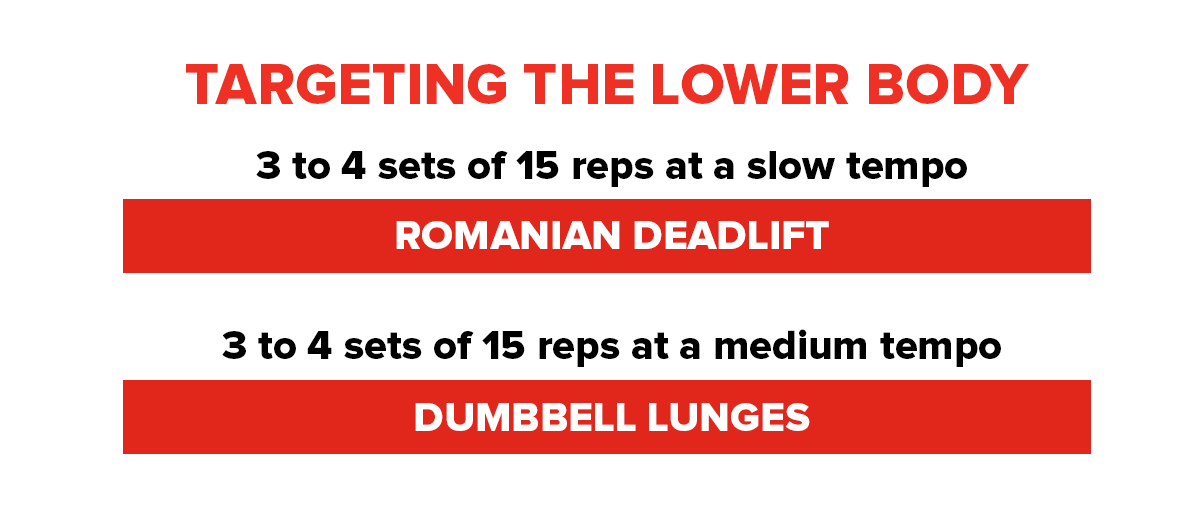Are you working out but not getting the definition you're looking for? It may be time to pick up some free weights to target specific areas of your body.
Here are some reasons why it's smart to use dumbbells, and points to keep in mind as you follow these examples of upper- and lower-body exercises.
The advantages
Using free weights increases your range of motion, allowing you to extend the movement of whatever you're doing much further than you could with a machine or a barbell, which helps target specific muscles.
If you're doing a bench press or push-up, you can only go as far as the floor or until the bar hits your chest. With dumbbells, you can go deeper and lower. You can also widen out your arms, bring them closer together and change your hand positions, which helps target different muscles. It's also easier to vary angles from incline to decline and anywhere in between.
Dumbbells help to train stabilizer muscles and strengthen connective tissues (ligaments and tendons), because your body is forced to control the weight versus machines that are tethered or on a track.
Free weights allow you to transfer between exercises quickly rather than taking the time to change machines. You can also do the exercises faster with smaller muscle groups such as arms and abs, and these muscle groups need higher reps.
Laying the foundation
Before you begin using free weights, you should have mastered basic movements such as squats, pull-ups, push-ups, presses and lunges.
It's also critical that you don't skimp on the warm-up. The risk of injury goes up with free weights because there’s nothing tethering the weight. When you're using a resistance machine with a cable and let go, the weight goes back into position. If you let go of a dumbbell, it could fall on you or the sudden release might stretch or strain a muscle.
The best warm-up before free weights is dynamic stretching of the areas you want to target the most, such as wrists, ankles, hips and shoulders.
Functional fitness
A lot of exercises using free weights produce benefits for our daily lives.
Romanian deadlifts boost the strength of lower-back muscles, which is great for people who sit a lot during the day.
Lunges are a movement we do in real life when we bend down to pick something up.
Free weights also offer flexibility in workouts. You can do partial reps when you're tired. If you're doing a lunge, you can drop the weights and continue the exercise without them. And if you can't complete a rep, it's safer to put free weights down rather than risk pulling your muscles.
It's not easy to achieve the definition we want, but bypass machines for a while and take advantage of the range of motion free weights offer.
How much weight?
The weight varies depending on the person, but dumbbells should never be used at the maximum weight you think you can handle. Aim for 70 to 80 percent of maximum for hypertrophy/muscle-building benefits and 50 to 65 percent for muscle endurance/fat-loss benefits.
Now let's move on to some exercises, which you should put together so you’re doing the big, heavy exercises first and then moving to the smaller ones.

Why slow movements? It's because slow movements have the most muscle recruitment and create muscle exhaustion, which is the best thing for connective tissue. It also teaches your nervous system how to do the movement well.

Romanian deadlifts work your hamstrings, glutes and lower back. Complete three to four sets of 15 reps at a slow tempo. You can also change your stance from conventional to sumo to single leg.
Lunges focus on the anterior side of legs, mostly quads, but also your hamstrings and calves.
Hold the dumbbells at your sides and do three to four sets of 15 reps each at a medium tempo, which is three seconds for each movement. Keep your back straight and maintain your balance.
